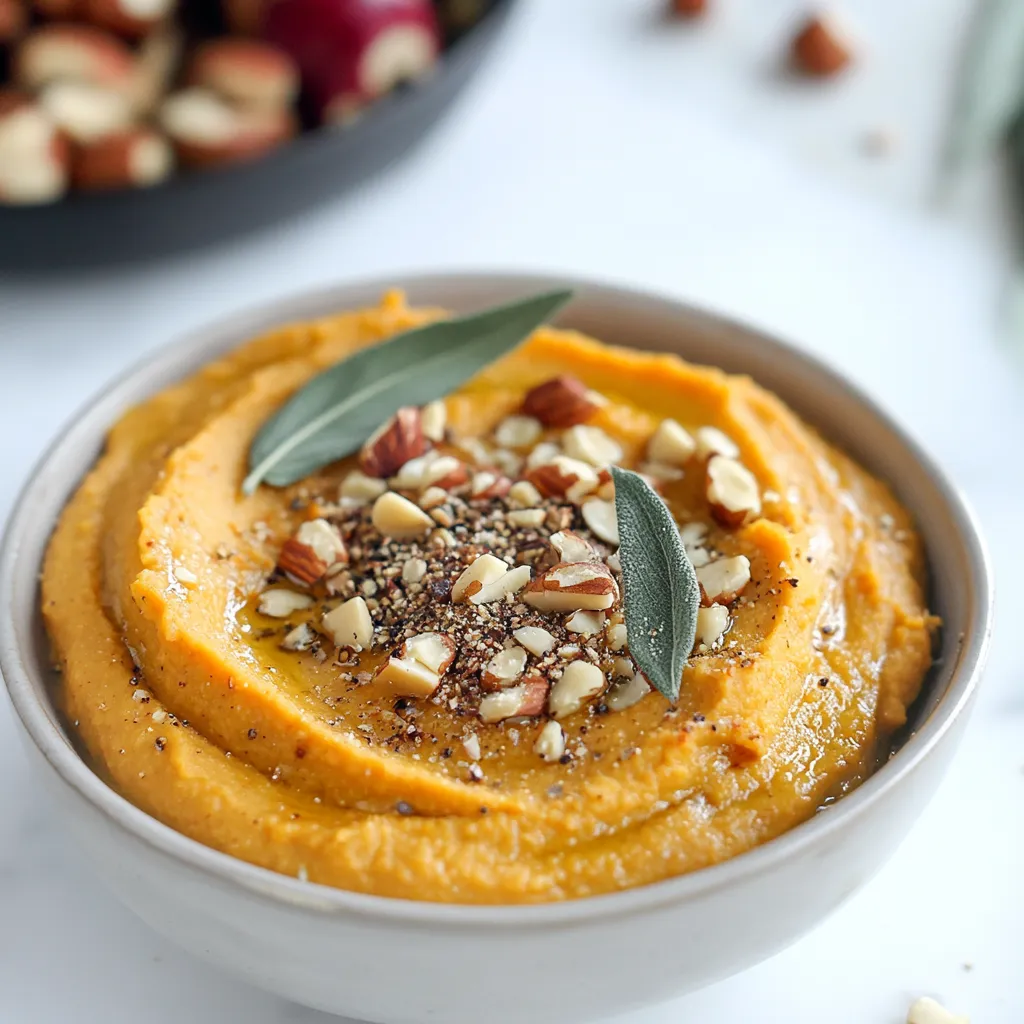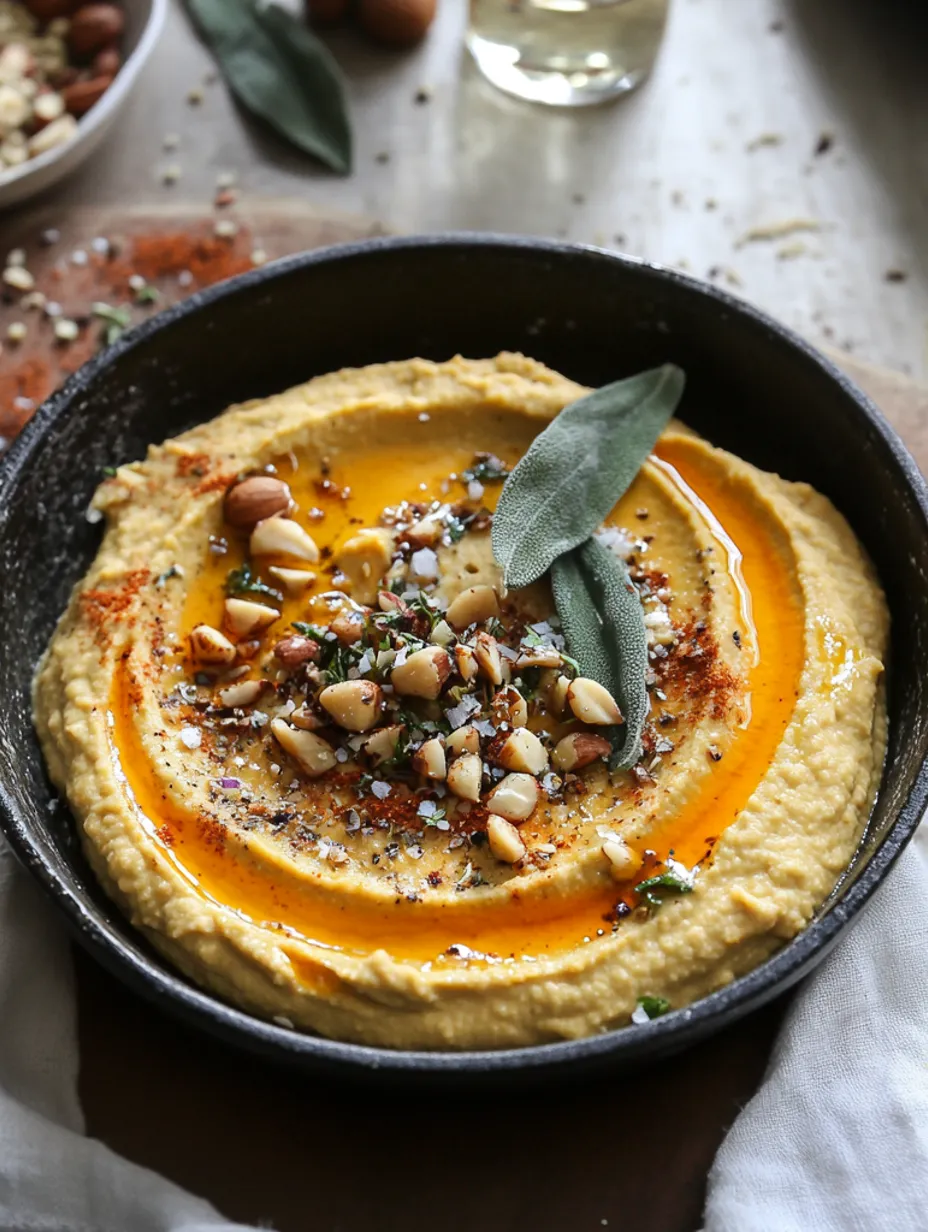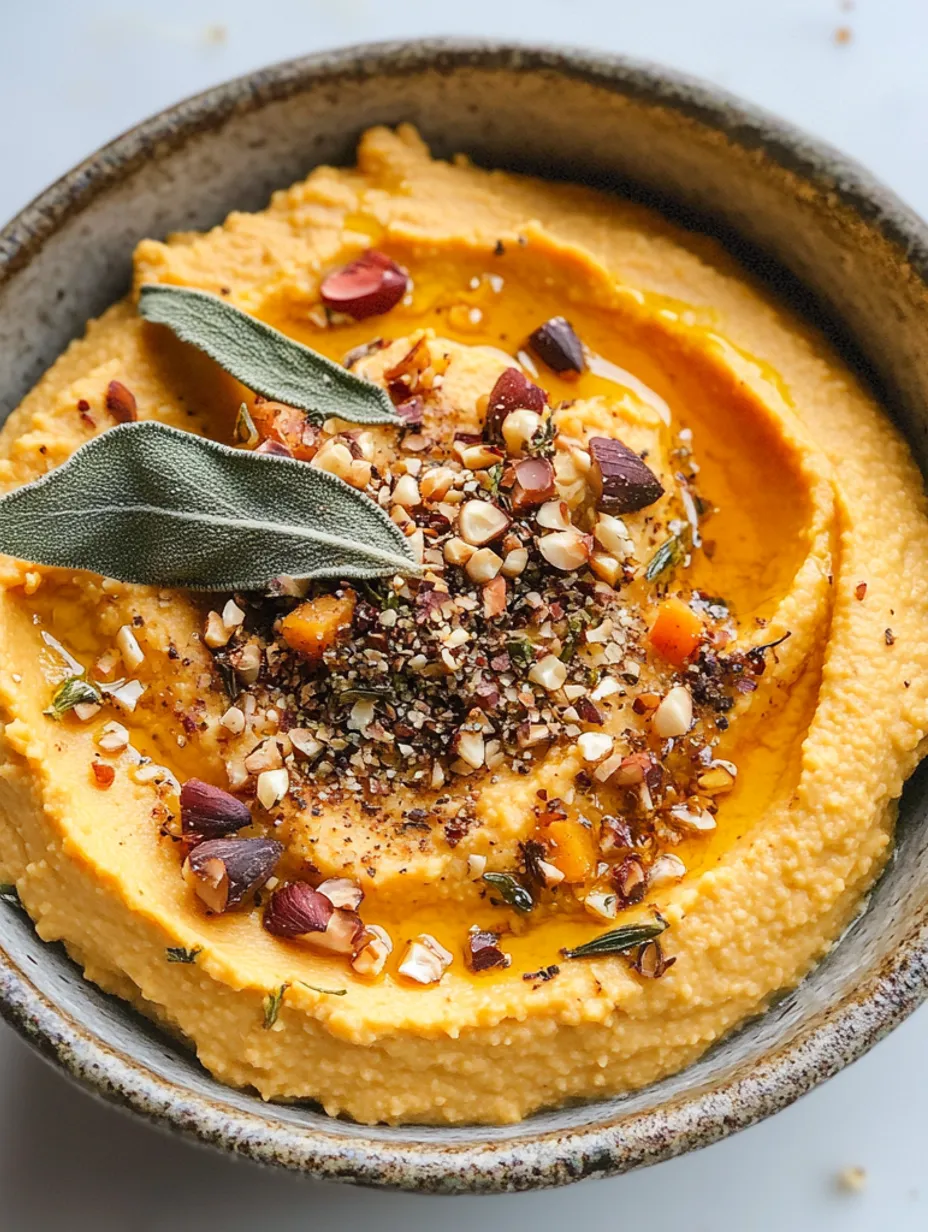 Save
Save
When roasted butternut squash meets fragrant spices, it creates a magical spin on classic hummus that turns an ordinary dip into something you'll crave again and again. I stumbled onto this creation one cold fall night while looking at some leftover squash and chickpeas, wondering how to break away from my typical autumn dishes. Now this butternut squash hummus shows up at all my parties and quiet snack times too. I love how the squash's sweet hints make everything super smooth and silky, working beautifully with the rich tahini and that crunchy dukkah on top.
The first time I brought this to a family party, my uncle (who always says hummus should stay "pure and traditional") kept coming back for more. Before the night ended, he was asking how to make it for his poker buddies.
Smart Ingredient Picking
- Butternut Squash: Don't grab just any squash for this recipe. Pick one with even beige coloring without mushy areas or green spots. It should feel heavy when you pick it up, which means it's packed with flavor. Check that the stem looks firm and healthy
- Chickpeas: Good quality canned ones work great, but cooking dried chickpeas yourself gives amazing results. If you're using canned, try to find brands that cook with kombu, which makes them easier to digest
- Tahini: This can totally make or break your hummus. Spend a little more on smooth, nutty tahini without any bitter taste. Often the best ones come from Lebanon or Israel
- Extra Virgin Olive Oil: Go for something fruity and nice enough to eat with bread. The oil's taste really comes through in the final dip
- Fresh Lemons: Don't even think about the bottled stuff—fresh lemons give you that zingy brightness plus natural oils from the skin that boost all the flavors
 Save
Save
Delightful Cooking Steps
- Base Preparation
- Start by turning your butternut squash into sweet, caramelized gems. Cut it into same-sized cubes so they cook evenly
- Mix them well with olive oil, making sure every piece gets a good coating for perfect browning
- Lay them out on a hot baking sheet with plenty of space between pieces so they roast rather than steam
- Dukkah Assembly
- Heat your whole spices in a dry pan until they smell amazing and fill your kitchen with scent
- Dump them in a food processor with your toasted nuts and pulse a few times for a rough, interesting mix
- Keep any extra in a sealed container to jazz up other meals later
- Final Hummus Creation
- While your squash cooks, peel the skins off your chickpeas—it's kind of relaxing and makes your hummus incredibly smooth
- Mix your warm chickpeas and roasted squash in a good blender for the silkiest texture
- Add your tahini, then slowly pour in ice-cold water while blending to get just the right thickness
- Finish with fresh lemon juice and seasonings, tasting as you go until it's perfect
When my Lebanese mother-in-law first saw this hummus variation, she looked pretty suspicious. But after watching her grandkids gobble it up with both pita and carrot sticks, she smiled and said sometimes new twists on old favorites can be pretty wonderful.
Beautiful Serving Ideas
Making your hummus look amazing isn't just for show—it actually makes everything taste better too. Take the back of your spoon and make some pretty swirls across the top. These little valleys aren't just for looks—they catch pools of olive oil and hold that crunchy dukkah topping perfectly. Throw on some crispy sage leaves for color and a lovely aroma that goes so well with the sweet squash.
Fun Recipe Changes
What's great about this recipe is how flexible it is. During fall, try using roasted pumpkin instead of butternut squash. Sweet potatoes work amazingly well too, and roasted carrots bring their own special sweetness to the mix. If you like things spicy, mix in some harissa paste for a sweet-hot combo that's super addictive.
Storage Know-How
Keep your hummus creamy by pouring a thin layer of olive oil over the top before putting it in the fridge. This oil barrier stops air from drying it out and prevents that weird skin from forming. Always let it sit out for about 20 minutes before serving, since cold temps really dull all those amazing flavors.
Prep In Advance
You can make this hummus up to four days ahead, which is great for parties. It actually tastes better after sitting for a day or two as all the flavors mingle together. If you're making it ahead, just wait to add the dukkah and fried sage until right before serving so they stay crunchy and fresh.
 Save
Save
Expert Kitchen Secrets
- Let your blender run for a full 5-7 minutes to get that incredibly smooth restaurant-style texture
- Keep the liquid from your chickpea can to adjust thickness—it works much better than plain water
- Add salt and spices bit by bit as you go rather than dumping it all in at the end
- Try warming your serving dish before adding the hummus so it stays at the perfect temperature longer
After trying so many different versions and tweaks, this butternut squash hummus has become more than just another dip in my rotation—it shows how old recipes can grow into something new while keeping what makes them special. Whether I'm eating it alone with a good book or serving it as the first course at a holiday dinner, it always brings smiles and questions about the recipe. The mix of sweet roasted squash, smooth chickpeas, and aromatic dukkah creates something that feels both comforting and fancy at the same time.
Recipe FAQs
- → Can I prep dukkah earlier?
- Absolutely! Keep it sealed tightly, and it’ll stay fresh for a month. Make extra—it’s great on other foods.
- → What pairs well with this?
- Pair it with fresh veggies, pita, crackers, or even spread it inside wraps and sandwiches.
- → Is canned squash okay to use?
- Freshly roasted squash has the best taste, but canned works too. Just get rid of extra moisture first.
- → What’s a nut swap for hazelnuts?
- Hazelnuts are classic but can be swapped for almonds or walnuts in the spice mix.
- → How long does it last once made?
- It’ll keep fresh in the fridge for 5 days in a sealed container. Save the toppings for later.
Squash Hummus Dukkah
Silky butternut hummus paired with a crunchy dukkah mix and crispy fried sage.
Ingredients
→ Butternut Squash Hummus
→ Dukkah Spice Blend
Steps
Heat your oven to 400°F. Cube the squash after peeling it, then toss with salt, pepper, and oil. Roast for 35-40 minutes until soft, then cool.
In a blender, process the chickpeas, squash, tahini, garlic, salt, paprika, water, oil, and lemon juice until creamy. Add more water if needed to adjust the texture.
In a cast iron pan, lightly toast the hazelnuts for 2-3 minutes. Once cool, loosen the skins by rubbing them with a clean towel, then roughly chop the nuts.
Toast the sesame seeds until slightly brown. Separately, toast the cumin, peppercorns, fennel, and coriander seeds until aromatic.
Using a grinder, crush the spices. Mix with the hazelnuts, sesame seeds, thyme, and salt until well combined.
Notes
- Keep dukkah in a sealed container for up to a month.
- Hummus stays fresh in the fridge for about 5 days.
Required Tools
- Blender or food processor
- Pan (cast iron preferred)
- Sheet pan for roasting
- Grinder for spices or coffee
Allergy Information
Check each ingredient for potential allergens and consult a healthcare professional if needed.
- Includes hazelnuts (nuts)
- Uses sesame (seeds and tahini)
Nutritional Facts (per serving)
These details are provided for informational purposes and aren't a substitute for medical advice.
- Calories: 320
- Fats: 22 g
- Carbohydrates: 24 g
- Proteins: 8 g
